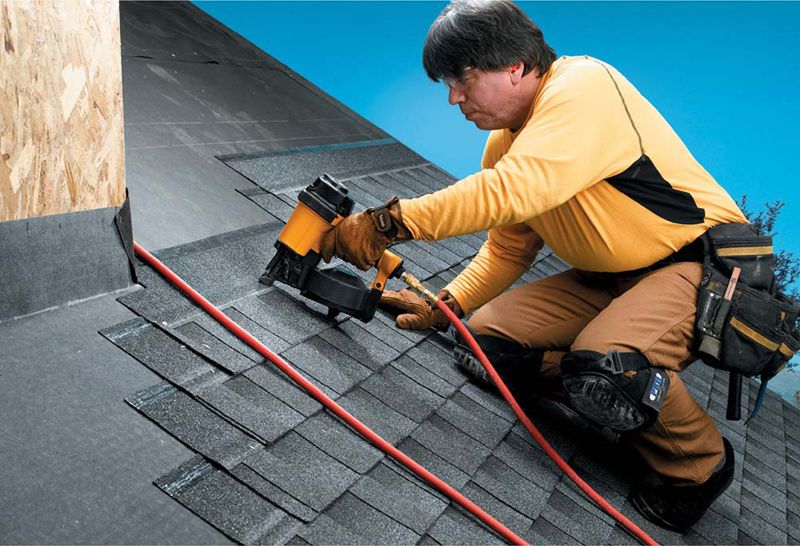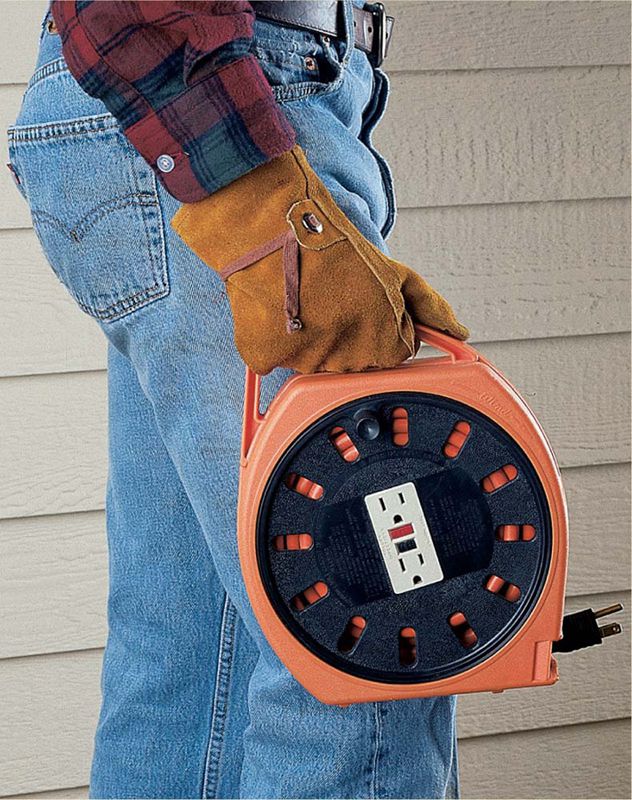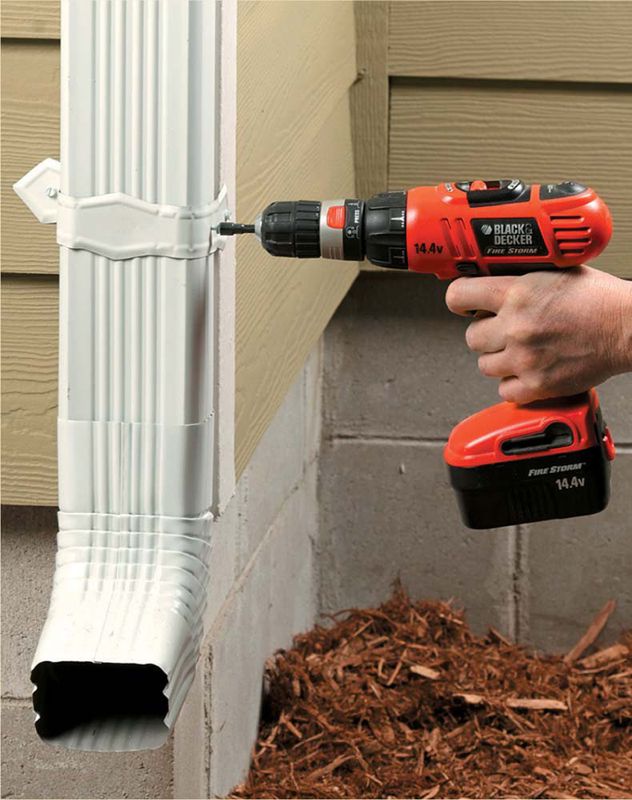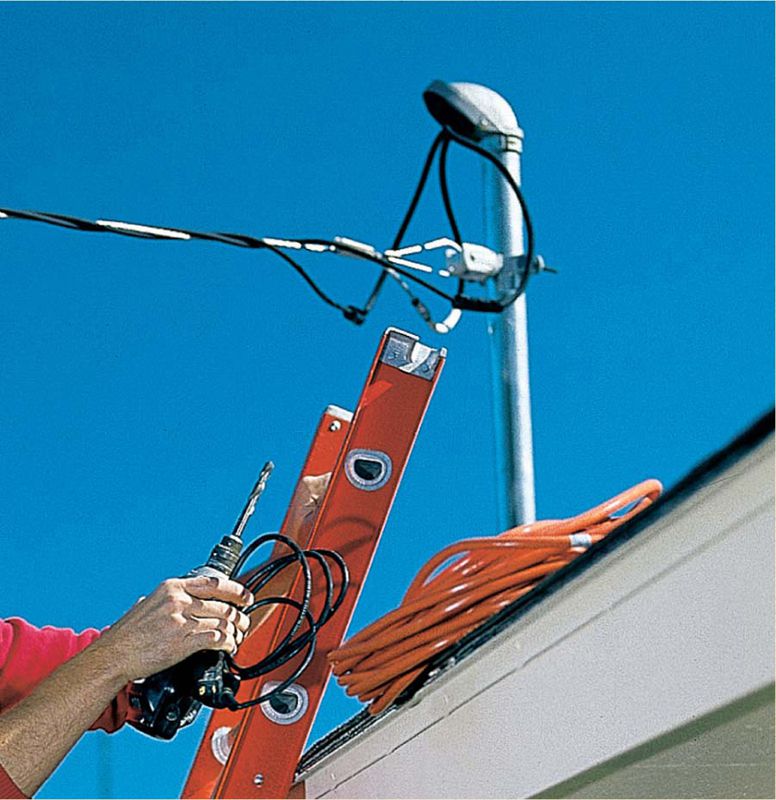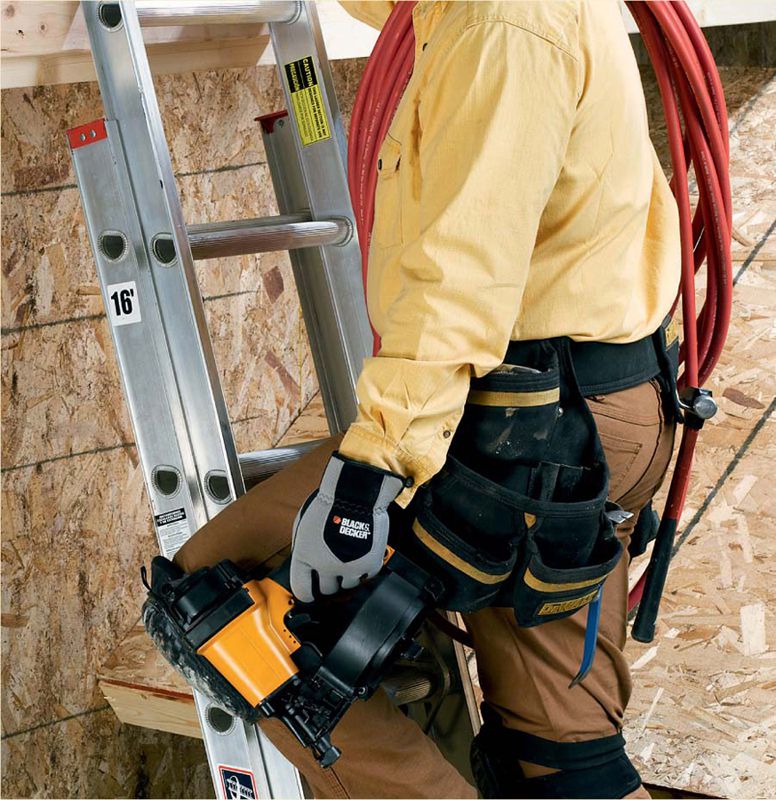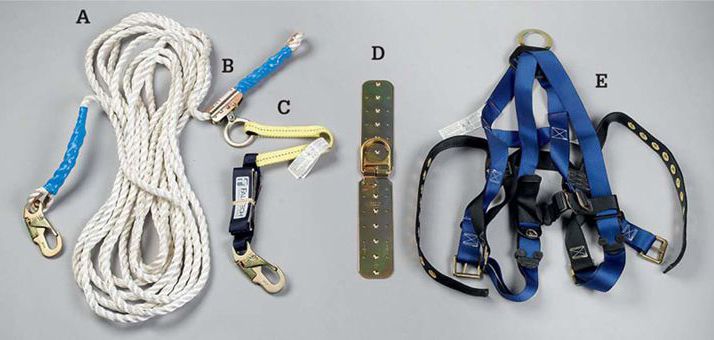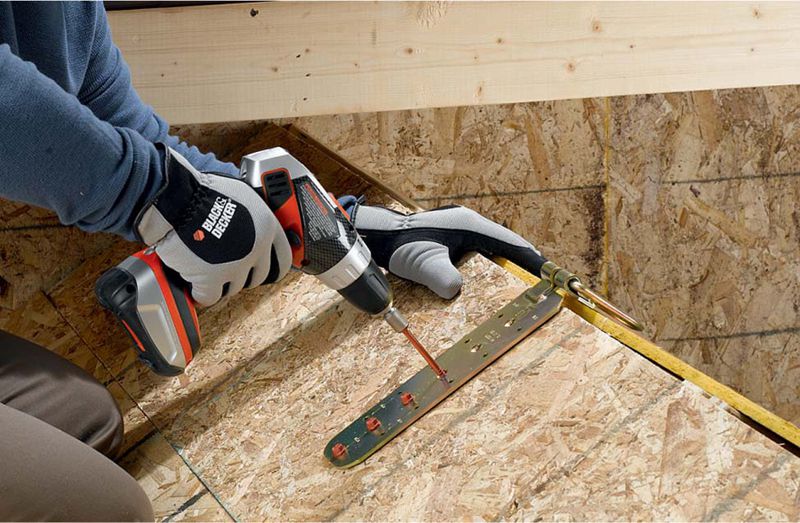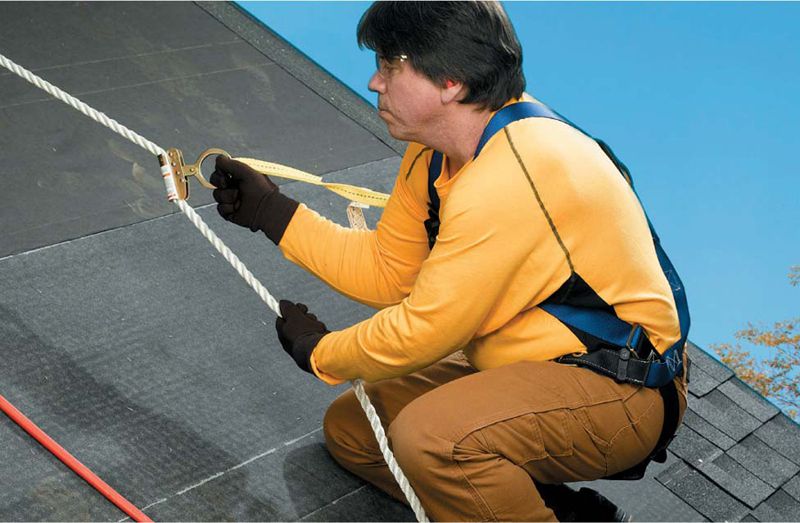EXTERIOR
ROOFING: SAFETY EQUIPMENT
Working on the exterior of a house presents challenges not faced in the interior, such as dealing with the weather, working at heights, and staying clear of power lines. By taking a few commonsense safety precautions, you can perform exterior work safely.
Dress appropriately for the job and weather. Avoid working in extreme temperatures, hot or cold, and never work outdoors during a storm or high winds.
Work with a helper whenever possible—especially when working at heights. If you must work alone, tell a family member or friend so the person can check in with you periodically. Keep your cell phone handy at all times.
Don’t use tools or work at heights after consuming alcohol. If you’re taking medications, read the label and follow the recommendations regarding the use of tools and equipment.
When using ladders, extend the top of the ladder 3 feet above the roof edge for greater stability. Climb on and off the ladder at a point as close to the ground as possible. Use caution and keep your center of gravity low when moving from a ladder onto a roof. Keep your hips between the side rails when reaching over the side of a ladder, and be careful not to extend yourself too far or it could throw off your balance. Move the ladder as often as necessary to avoid overreaching. Finally, don’t exceed the workload rating for your ladder. Read and follow the load limits and safety instructions listed on the label.
Wear appropriate clothing and safety equipment whenever working high above ground. Eye protection and hearing protection are very important when using power tools or pneumatic tools. And if you’ll be climbing on a roof, wear tennis shoes or any sturdy shoe with a soft sole designed for gripping. When roofing, always avoid hard-soled shoes or boots, which can damage shingles and are prone to slipping.
 FALL-ARRESTING GEAR
FALL-ARRESTING GEAR
Even if you consider yourself dexterous and are comfortable working in high places, all it takes is one misstep on a roof to lead to a tragic fall. Despite the fact that many professional roofers never don safety harnesses, you should seriously consider investing in personal fall-arresting gear if you plan to reroof your home. Fall-arresting gear consists of several components. You wear a webbed body harness that spreads the impact of a fall over your shoulders, thighs, and back to reduce injury. Harnesses are made to fit average adult builds. The harness connects to a shock absorber and a lanyard around 6 feet in length. A self-locking, rope-grab mechanism attaches the lanyard to a lifeline that must be fastened securely to a ridge anchor screwed to roof framing. In the event that you slip or fall, the rope grab will limit your fall to the length of the lanyard because it will not move down the lifeline unless you override the locking mechanism by hand.
Most rental centers will not carry fall-arresting gear, and a complete system will cost several hundred dollars. When compared with the loss of life or limb, however, your real investment is small. Better yet, you’ll have it available any time you need to get on the roof for cleaning tasks or to make repairs.
Personal fall-arresting gear consists of a lifeline (A) with mechanical rope grab (B) and lanyard (C); a metal ridge anchor (D); and a body harness (E).
A metal ridge anchor must be secured with screws to the roof framing. Follow the manufacturer’s recommendations for proper screw sizing, and make sure your attachment points go beyond the roof sheathing into the roof trusses or rafters.
The rope-grab mechanism allows you to move up a roof along the lifeline without interference. To move down the roof, you’ll need to override the grab by hand. As soon as you release it, the lock engages again.
